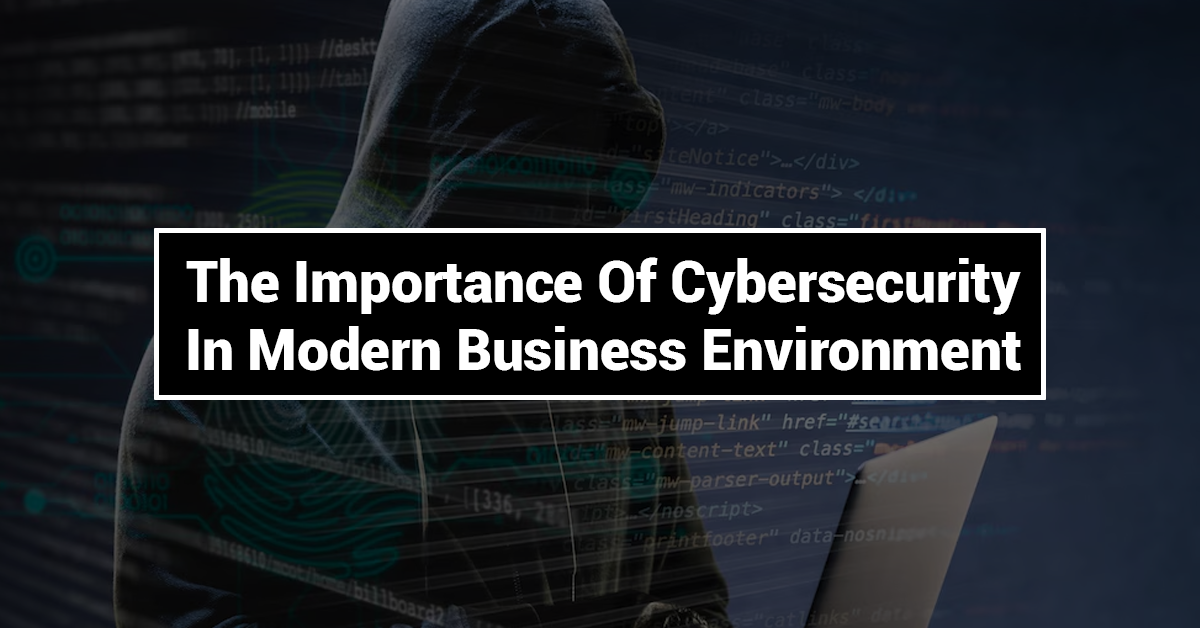In the digital age, businesses face various cyber threats that can threaten operations, financial stability, and reputations. As cyber-attacks grow more advanced and widespread, robust cybersecurity measures are no longer optional but essential for any business.
This blog explores the importance of cybersecurity in a modern business environment, detailing the technical aspects and strategies companies must adopt to safeguard their assets.
Why is Cybersecurity Important?
Cybersecurity involves protecting networks, devices, programs, and data. It uses practices, technologies, and processes to defend against attacks, damage, or unauthorized access.
Effective cybersecurity strategies involve multiple layers of protection spread across computers, networks, and programs.
What Are the Core Cybersecurity Threats?
- Malware: Malicious software such as viruses, worms, ransomware, and spyware infiltrates systems to damage or disable them, steal data, or gain unauthorized access.
- Phishing: Cybercriminals use fraudulent communications, often emails, to trick individuals into revealing sensitive information, such as passwords and credit card numbers.
- Ransomware: This type of malware encrypts a victim’s data, demanding payment to restore access.
- Denial-of-Service (DoS) Attacks: Attackers overwhelm a network with traffic, rendering it unusable.
- Insider Threats: Employees or other insiders exploit their access to harm the organization.
We understand that your small business faces security risks daily and that it's realistically difficult to tackle these issues by yourself. Don’t worry! We are here to help. Our team of experts will continuously monitor your networks and ensure your system uses modern IT protection methods.
Get a free consultation with one of the premier cybersecurity services for your Cincinnati business today!
How do cyber threats affect business operations?
- Financial Loss: Direct theft, ransom payments, and costs associated with recovery and restoration.
- Reputation Damage: Loss of customer trust and potential loss of business.
- Operational Disruption: Downtime and loss of productivity during and after an attack.
- Legal Consequences: Non-compliance with regulations can lead to hefty fines and legal actions.
What are the Key Components of a Robust Cybersecurity Strategy?
Network Security: It protects the usability and integrity of networks and data, including hardware and software technologies like firewalls, intrusion detection systems (IDS), and intrusion prevention systems (IPS).
- Endpoint Security: It ensures that devices such as computers, smartphones, and tablets are secure, as is the case with antivirus software, anti-malware solutions, and device management systems.
- Data Security: It protects data from unauthorized access and corruption. Techniques include encryption, tokenization, and secure data storage.
- Identity and Access Management (IAM): It makes sure that the right individuals have the appropriate access to resources like multi-factor authentication (MFA), single sign-on (SSO), and user access controls.
- Security Information and Event Management (SIEM): It offers real-time analysis of security alerts generated by applications and network hardware.
- Cloud Security: It protects data, applications, and infrastructures in the cloud, including cloud-specific firewalls, encryption, and secure access controls.
- Regular Security Assessments: This includes vulnerability assessment and penetration testing to identify and solve security weaknesses.
What are the Steps in Implementing Cybersecurity Measures?
- Firewalls: Acts as a barrier between trusted and untrusted networks, controlling the incoming and outgoing network traffic based on predetermined security rules.
- Encryption: It converts data into a code to prevent unauthorized access. It is important for data in transit (emails, file transfers) and at rest (databases, storage devices).
- Multi-Factor Authentication (MFA): This requires two or more verification methods to access resources, enhancing security beyond just passwords.
- Intrusion Detection and Prevention Systems (IDPS): Monitors network or system activities for harmful or policy violations and eventually take action to prevent them.
- Endpoint Detection and Response (EDR): It provides continuous monitoring and response to advanced threats on endpoints, such as laptops and mobile devices.
- Regular Software Updates and Patch Management: It ensures that all systems and applications are updated with the latest security patches to protect against vulnerabilities.
- Employee Training and Awareness Programs: These programs educate employees about common cyber threats, such as phishing and social engineering, and how to avoid them.
- Incident Response Plan: This plan outlines the procedures for detecting, responding to, and recovering from cybersecurity incidents. It includes roles and responsibilities, communication strategies, and recovery steps.
Regulatory Compliance and Cybersecurity
Businesses must comply with various regulations that mandate specific cybersecurity measures:
- General Data Protection Regulation (GDPR): It protects personal data in the EU and requires businesses to implement appropriate security measures.
- Health Insurance Portability and Accountability Act (HIPAA): It mandates secure handling of protected health information (PHI) in the U.S.
- Payment Card Industry Data Security Standard (PCI DSS): This standard requires businesses to secure credit card information.
Future Trends in Cybersecurity
- Artificial Intelligence (AI) and Machine Learning (ML): It enhances threat detection and response through predictive analytics and automated security processes.
- Zero Trust Security: It assumes no trusted zones and continuously verifies every access request as though it originates from an open network.
- Quantum Cryptography: It uses principles of quantum mechanics to enhance cryptographic security, offering theoretically unbreakable encryption.
- IoT Security: As the Internet of Things (IoT) expands, securing connected devices becomes crucial to protect against potential vulnerabilities.
Conclusion
Cybersecurity is paramount in today's business environment. Although cyber threats can have devastating consequences, a comprehensive cybersecurity strategy can help businesses protect their assets, maintain trust, and ensure operational continuity.
Are you looking for ways to resolve your cyber threats with robust security measures? Then you are in the right place. SpliceNet is the right choice and one of the best Cybersecurity services for Cincinnati businesses.


